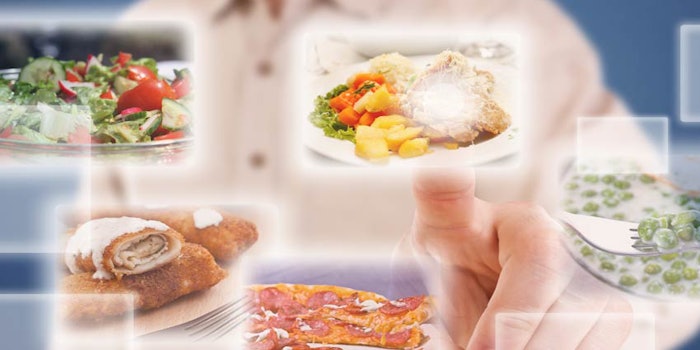
The Flavor and Extract Manufacturers Association’s (FEMA) annual business meeting and leadership conference took place on May 7-9, 2017 at the Ritz-Carlton in Naples, Florida.
The two day conference featured five speakers whose discussions surrounded the future of the food and flavor industry as well as key growth drivers, including venture capital initiatives, rapidly evolving consumer trends, financial impacts, industry disruptors and generational shifts.
Speakers were Gillian Tett, managing editor and columnist, Financial Times (US), William Rosenzwieg, dean and executive director, The Food Business School, Barb Renner, vice chairman and US leader, consumer products, Deloitte LLP, Heidi Vesterinen, financial analyst, Exane BNP Paribas, and Jamie Notter, co-founder, WorkXO.
Opening Address
In his opening address, Dr. John Cavallo, president, FEMA, spoke about the importance of implementing digital communication strategies within the industry and externally in the public sector. “We all know that the demands of the industry are changing, the business environment is extremely different from where it was years ago, the digital communication world is now driving much of our communication platforms and the way people communicate and that’s now the norm,” he said.
Cavallo announced Tim Webster, vice president, global business development, David Michael & Co., as the recipient of the Richard L. Hall Distinguished Service Award. Cavallo said, “I’m honored to give a tribute to an individual whose work over the years has helped bring FEMA to the point where we are today…Named after Dr. Richard Hall [an industry legend]. It only makes sense that [the award] goes to someone known for their contribution to FEMA and helping to improve our stature, our growth, our positive influence on the industry and what we do for people’s lives every day.”
As he thanked his influential colleagues and supportive family, Webster also thanked FEMA in his acceptance speech. “It doesn’t take a village, but it does take an association of people who leave their personal and company agendas at the door in order to work together to protect the industry, as well as the safety and integrity of our food supply,” he said.
An Anthropological Look at Food
Gillian Tett, managing editor and columnist, Financial Times (US), discussed the impact of digitization on a global level, including the food and flavor industry. Digitization is the driver in changing “how we communicate with each other, how we imagine ourselves to be, our communities, how we define our identity, how we interact as a society,” Tett explained.
Using an anthropological perspective, Tett summed up the current sociopolitical framework as fragmented, mistrustful, customizable and uncertain.
As we are faced with varied opinions, alternative facts and stories, our culture has essentially been fragmented into “self-selected silos,” where people choose to join tribes that have similar perspectives as their own. Despite this hyper-connectivity that we experience in the digital world, it actually becomes more divisive, Tett explained.
[Digitization drives] how we communicate with each other, how we imagine ourselves to be, our communities, how we define our identity, how we interact as a society."
As people trust one another through these digital channels, their mistrust towards larger institutions increases. There is a sharp decline in trusting authority figures and nearly every institution (except technology) in the last few decades, Tett explained. There is a growing trust in numbers and quantitative skills, which brings the rise of the “digital anthropologist.” Once the source of authority, the government, has now declined in public trust, which has been replaced with the word of the regular employee, academic expert or peer.
Popular media is a leading driver in customization, particularly among millennials. As consumers are looking for more exclusivity in their products, the idea of curating one’s own personal experience becomes more important.
Tett provided the example of Starbuck’s Secret Menu, a customizable drink disseminated through Instagram. “In the last 20-30 years, there has been a powerful shift [in that] we have taken it as a God-given right to customize everything,” she added.
In our current sociopolitical climate, uncertainty grows as a result of volatile shifts in authority with an increasing demand in transparency. What does this mean for the food and flavor industry and how can we measure big data accurately?
When understanding a fragmented, uncertain and mistrustful consumer who is expecting personalized products, Tett encouraged people to place a culture in context, rather than overgeneralizing. “Do what you can to change what you’re consuming, [in other words] step outside of your thought patterns [in order to] see a bigger picture outside of cyber tribalism.”
The Future of Food
The global food market is worth $21.5 billiona, said William Rosenzwieg, dean and executive director, The Food Business School. He added that traditional food culture has evolved to a dynamic modern food culture shaped by culture, technology, biology and microbiomics; as well as venture capital initiatives.
Though we may appear to be fragmented in our way of thinking and our way of living, we are fundamentally connected when it comes to disruptions in our food.
“Everything that has to do with growing, processing, bringing food to market, getting it into people’s guts, getting it back through waste system, touches us all of us every day.” Rosenzweig explained that though we may appear to be fragmented in our way of thinking and our way of living, we are fundamentally connected when it comes to disruptions in our food.
Young people are deeply concerned about food, social impact and the meaning that food has on our daily lives. Rosenzweig identified the four key food drivers to be automation, (Eatsa for example, where consumers can order a customized meal which is served by an automated robot), meal replacement (plant-based menus), radical transparency (database of thousands of foods which can be tracked by a scanner in a cell phone) and the microbiome (customizing diets based on an individual’s gut health).
Further, the flavor industry can be driven by venture capital in order to respond to these trends, as well as push company growth, which is seen more in partnerships and collaborations.
For perspective, our global population will reach 10 billion by 2050, where 65% will be living in urban cities. Barb Renner, vice chairman and US leader, consumer products, Deloitte LLP, explained that population growth is shifting from west to east with the Asia Pacific in the lead – specifically China, which is seeing a burgeoning disposable income. Additionally, the median age of consumers is 20 in Africa, 40 in the United States and 44 in Europe.
Renner added that consumers are driven by an overarching theme of transparency, as well as other trends including health and wellness, safety, social impact and experience. One of the major concerns Renner found in her analysis was how sustainability has shifted from company initiatives to a global mission, particularly regarding the global water crisis. By 2050, there will be 55% more demand for water.
Hidden Heroes of the CPG Industry
Heidi Vesterinen, financial analyst, Exane BNP Paribas found that the consumer packaged goods (CPG) sector is facing an unprecedented level of change due to lower entry barriers. This is a result of crowd funding and venture capital, outsourcing producing, social media as an advertising platform, and online distribution.
Suppliers are growing more than customers, Vesterinen explained, due to more product fragmentation, innovation, more consumer insights, traceability and sustainability, as well as regulation.
Despite these changes, she added that ingredient suppliers will remain the “hidden heroes” of the CPG industry, as the leaders in innovation and technology in an evolving, technological market. Natural and clean label continue to drive trends. As the demand for natural grows, the market’s volatility will increase, resulting in more partnerships and back integration approaches, for example the growing influence of biotechnology in R&D and product development.
Other trend drivers include M&A activity where companies seek adjacent businesses to expand portfolios and capabilities, as well as more investment in targeting local and regional markets.
Vesterinen’s research found that as consumers continue to demand more complex demands (i.e. pork flavored vegan sausage), companies are challenged with creating more holistic, multi-ingredient approaches to meet them.
Understanding Millennials
Millennials comprise the largest segment of the workforce, Jamie Notter, co-founder, WorkXO says in the conference's final presentation. Despite challenges of meeting millennial demands, Notter shed some light on understanding this influential generation, who will ultimately shape the future of the world and the workplace.
Millennials are raised with social internet, abundance, diversity and an elevated status of innovation, Notter explains. With all of this hyper-connectivity and access to information, Notter suggests that creating a workplace culture based on digitization, clarity, fluidity and speed will yes, blur the lines of traditional hierarchy, but ultimately set a company up for success in order to compete and/or lead in a dynamic market.
a Frost & Sullivan report










